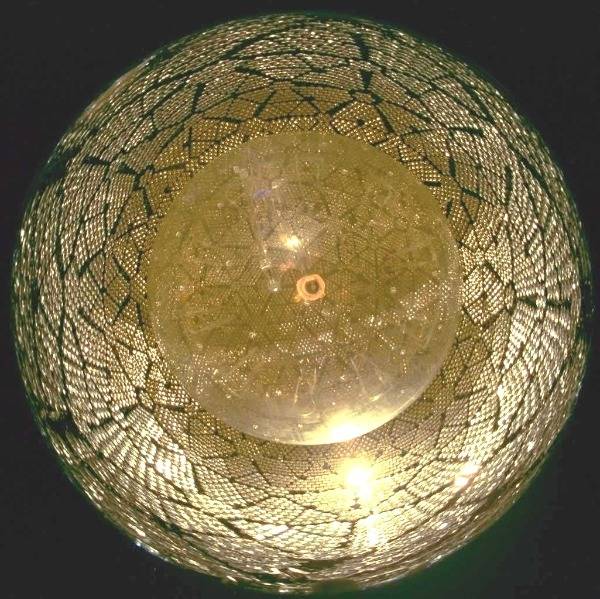This article is a preview from the Winter 2016 edition of New Humanist. You can find out more and subscribe here.
Out in the darkness at the edge of the Solar System there may lurk an unknown planet. Not a tiny splinter of ice like Pluto but a monster as massive as ten Earths. It seems scarcely believable that such a behemoth could have been overlooked. But, in January 2016, two astronomers in the US stunned the scientific community with their claim that another world circles beyond the eight known worlds: Planet Nine.
Mike Brown and Konstantin Batygin of the California Institute of Technology in Pasadena had been puzzled by the Kuiper Belt, a swarm of icy rubble left over from the birth of the Solar System which swirls around the Sun beyond the outermost planet, Neptune. (Pluto is now recognised to be a Kuiper Belt Object, or KBO, which is why, in 2006, the International Astronomical Union downgraded it from a “planet” to a “dwarf planet”.)
What the two astronomers noticed was that the highly elliptical orbits of the six most distant KBOs are roughly aligned, pointing like a finger at the same region of the night sky. It was as if the bodies were responding to the gravitational tug of an invisible puppet master.
To have not been noticed before, Planet Nine would have to be a long way from the Sun. It would therefore have to be very massive to be having such an effect on the KBOs. According to Brown and Batygin’s estimate, its mass was comparable to that of the gas giant planet Neptune. They further concluded that Planet Nine would have to orbit on average about 20 times as far from the Sun as Neptune, and take not 165 years to go around the Sun, as Neptune does, but a whopping 15,000 years.
How could such a planet have ended up in such a remote location? One intriguing possibility is that it was captured from another star – perhaps when the Sun was crowded together with other suns in the stellar nursery where it was born. If that is the case, there is an alien cuckoo in our planetary nest. Another possibility is that the planet was born in the inner Solar System but came off worst in a game of interplanetary billiards, catapulted out into the void by a close encounter with the embryonic giant planet Jupiter.
The race is on to find Planet Nine. It is not likely to be an easy task. From the anomalous orbits of the KBOs, Brown and Batygin are unable to deduce a precise location in the sky for the hypothetical planet. And it is likely that it is so far from the Sun that it reflects little sunlight, so is very faint. However, if Planet Nine was ejected from the Solar System shortly after its birth, it could still be swaddled in embryonic hydrogen gas, which would keep it warm. It might therefore be detectable by the James Webb Space Telescope – the successor to NASA’s Hubble Space Telescope – when is it is launched into orbit in October 2018. James Webb will “see” in the infrared light given off by warm bodies.
Of course, Planet Nine could be a mirage. It has happened before. For about 40 years at the end of the 19th century, astronomers were convinced that anomalies in the orbit of Mercury, the innermost planet, were caused by the tug of a fiery, Sun-hugging world. The anomaly was explained when Einstein realised that Newton’s theory of gravity was incorrect on several points. In 1915, he replaced it with his own: the general theory of relativity. Gravity does not weaken according to the inverse-square of the distance of the sun, as Newton maintained. Einstein discovered that gravity was stronger closer to the Sun than Newton predicted. The notion of this other planet lived on, however, in Star Trek, as Mr Spock’s home world: Vulcan.
Far from going away, the idea of Planet Nine’s existence has been bolstered by a new claim by Elizabeth Bailey, a graduate student working with Brown and Batygin at Caltech. The trio point to a long-standing puzzle concerning the orientation of the planets. All are believed to have been born from a disk of debris circling the equator of the new-born Sun. However today the planets do not orbit in this plane, but in one tipped inexplicably at six degrees to this plane. According to Bailey, the tilt could be caused by the gravitational tug of Planet Nine.
With Planet Nine, history is repeating itself. In the 19th century, French astronomer Urbain Le Verrier deduced the existence of an unknown planet from the anomalous motion of Uranus, at the time the outermost known world. On 24 September 1846 in Berlin Johann Galle discovered Neptune. It seems that Newton’s law of gravity – which not only explains the visible world but also reveals the invisible realm – is a gift that just keeps on giving.

